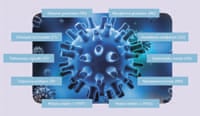Abbott has received FDA clearance for its Alinity m STI Assay, which simultaneously detects and differentiates four common sexually transmitted infections (STIs).
STIs, when left untreated, can lead to severe health complications, including increased risk of getting certain cancers and infertility.(2)
The first-of-its-kind multiplex test will help address increasing STI rates, after disruptions in delivery of care during the pandemic contributed to a decline in routine STI screening and an increase in cases.(1)
The Alinity m STI test for Chlamydia trachomatis (CT), Neisseria gonorrhoeae (NG), Trichomonas vaginalis (TV), and Mycoplasma genitalium (MG) requires one swab sample or a urine sample collected in a healthcare setting by either a clinician or by the patient. The test runs on Abbott’s Alinity m system — the company’s most advanced high-volume laboratory molecular instrument. Alinity m uses polymerase chain reaction (PCR) technology, with high sensitivity in detecting infectious diseases. This test can help healthcare providers save time, increase efficiency and better serve patients.
“Over the past several years, STI cases have been on the rise, and we expect to see increasing rates as people resume testing after delaying during the pandemic,” says Kathryn Becker, PhD, global director of scientific affairs innovation in Abbott’s diagnostics business. “With that comes an increased need for effective and efficient testing. This four-plex STI test gives healthcare providers a more holistic picture of someone’s health in a single test, helping to support the best treatment plan to address these common STIs individually or as co-infections.”
Importance of Efficient STI Tests
According to the Centers for Disease Control and Prevention (CDC), 20% of the U.S. population has an STI. (3) Every year for the past six years of available data, the CDC reported that cases of chlamydia, gonorrhea, and syphilis reached an all-time high.(1)
Advanced molecular testing allows those living with these infectious diseases to be diagnosed correctly and can help healthcare providers determine how individuals are responding to treatment. While the COVID-19 pandemic may have contributed to less sexual activity for some and limited availability of clinical services for STIs, there’s a potential risk of even higher increases of STI cases if sexual activity resumes, but regular STI testing and treatment does not.(4)
The pandemic accelerated the demand for additional channels for healthcare delivery, a trend reflected in Abbott’s commitment to improving the quality and accessibility of diagnostic testing.
“The pandemic showed us the value of having aspects of testing available to people in their homes,” says Becker. “As we look to the future of testing, we will be focused on bringing that kind of convenience and discretion for STIs and other conditions.”
References:
1. Reported STDs Reach All-time High for 6th Consecutive Year, https://www.cdc.gov/media/releases/2021/p0413-stds.html
2. U.S. Department of Health and Human Services, Sexually Transmitted Infections (STIs), 2022.
3. CDC estimates 1 in 5 people in the U.S. have a sexually transmitted infection, https://www.cdc.gov/media/releases/2021/p0125-sexualy-transmitted-infection.html
4. Samuel M Jenness, Adrien Le Guillou, Christina Chandra, Laura M Mann, Travis Sanchez, Daniel Westreich, Julia L Marcus, Projected HIV and Bacterial Sexually Transmitted Infection Incidence Following COVID-19–Related Sexual Distancing and Clinical Service Interruption, The Journal of Infectious Diseases, Volume 223, Issue 6, 15 March 2021, Pages 1019–1028, https://doi.org/10.1093/infdis/jiab051





